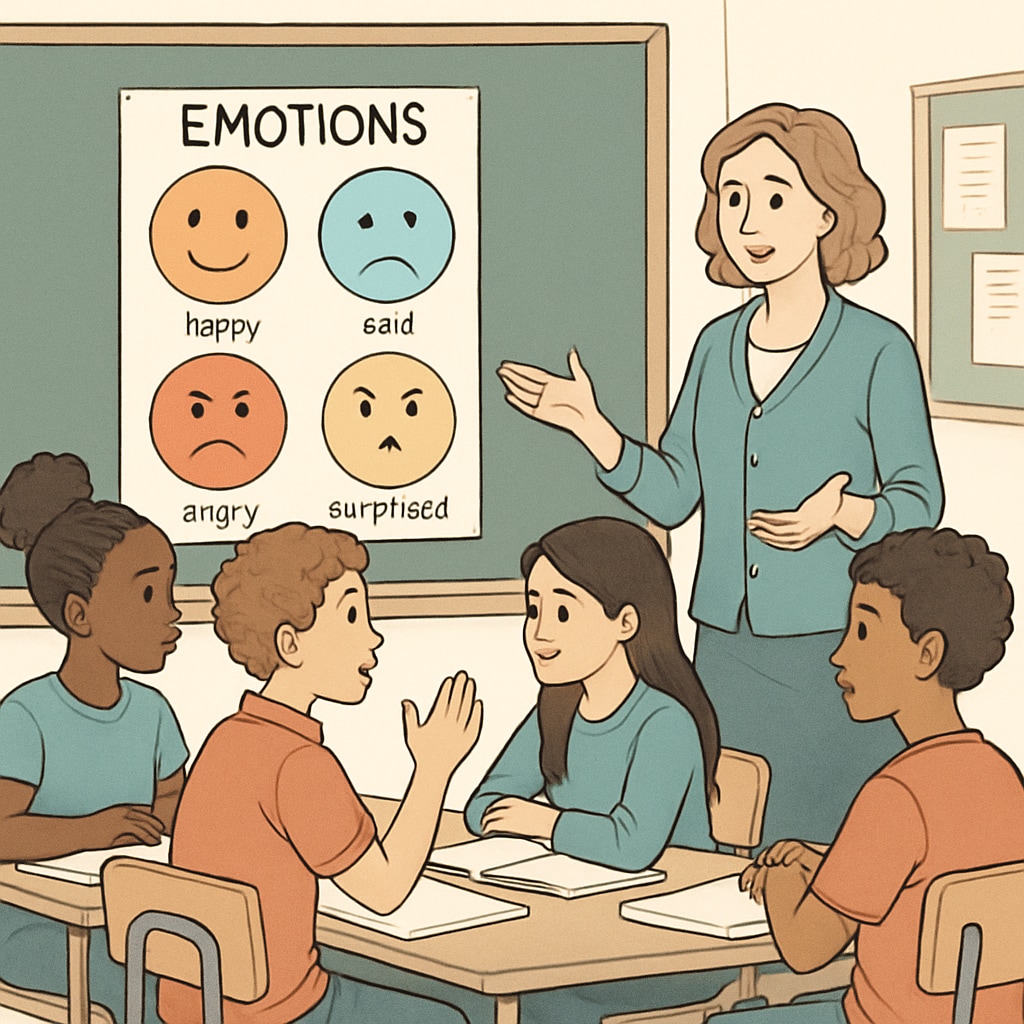In today’s world, emotional education, child development, and emotional regulation are critical components of a child’s holistic growth. However, these essential aspects are often neglected in the traditional K-12 education system. While academic success remains a priority, an increasing number of children struggle with managing their emotions, leading to long-term mental health challenges. This article delves into the importance of teaching emotional intelligence in schools, highlights the shortcomings of the current curriculum, and offers actionable solutions to ensure children receive a balanced and supportive developmental environment.
Why Emotional Education Matters for Child Development
Emotions play a pivotal role in shaping a child’s personality, relationships, and overall well-being. Emotional education refers to the process of teaching children how to identify, understand, express, and regulate their emotions effectively. Research has shown that children with strong emotional skills are more likely to succeed academically, maintain healthy relationships, and navigate life’s challenges with resilience.
For example, a study by the Collaborative for Academic, Social, and Emotional Learning (CASEL) found that students who received social and emotional learning (SEL) instruction demonstrated a 13% improvement in academic performance compared to their peers. Beyond academics, emotional education helps children develop empathy, self-awareness, and conflict-resolution skills—qualities that are indispensable in adulthood.

The Gaps in the K-12 Education System
Despite its importance, emotional education is rarely integrated into standard curricula. The current K-12 system often emphasizes subjects like math, science, and language arts while overlooking soft skills such as emotional regulation and interpersonal communication. This imbalance leaves students ill-prepared to face real-world challenges beyond academics.
One of the major reasons for this gap is the assumption that emotional education is the responsibility of parents. However, not all families have the knowledge, time, or resources to teach these skills effectively. As a result, children from underprivileged backgrounds are disproportionately affected, widening the social-emotional learning gap. Schools, being universal touchpoints for children, are in a unique position to address this disparity.

How Schools Can Incorporate Emotional Education
To bridge the gap in emotional education, schools must take proactive steps to embed it into their curricula. Here are some practical approaches:
- Dedicated SEL Programs: Schools can introduce structured social-emotional learning programs, such as mindfulness workshops, that focus on emotional awareness and stress management.
- Teacher Training: Educators should receive training to recognize emotional cues in students and integrate emotional education into their daily interactions.
- Collaborative Activities: Activities like role-playing, group discussions, and storytelling can help students explore emotions and develop empathy.
- Parental Involvement: Schools can provide guidance to parents on reinforcing SEL principles at home, creating a consistent emotional support system for children.
Incorporating these strategies not only benefits individual students but also fosters a positive school culture where emotional well-being is prioritized.
Conclusion: Prioritizing Emotional Regulation in K-12 Education
Emotional education, child development, and emotional regulation are too significant to be left to chance. By integrating emotional education into the K-12 curriculum, schools can empower children with the skills they need to thrive academically, socially, and emotionally. As our society becomes increasingly complex, the ability to navigate emotions will be as essential as traditional academic knowledge. It is time for educators, policymakers, and parents to recognize the value of emotional education and take collective steps to ensure it becomes an integral part of every child’s learning journey.
Ultimately, emotional education is not just an investment in individual students but in the well-being and resilience of future generations.
Readability guidance: The article maintains short paragraphs, uses transition words like “however” and “for example,” and includes actionable lists to enhance clarity. Passive voice and long sentences are minimized for better readability.


